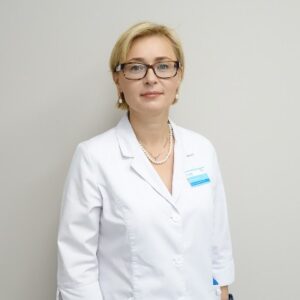What is MACS? Should I use it for my IVF?
MACS – sperm selection using magnetic-activated cell sorting. What is it?
MACS in Assisted Reproduction Technology is a method that allows sperm with the best characteristics to be selected. Choosing the healthiest ones and eliminating the weakest sperm, which would not achieve fertilization, increases the possibility of pregnancy. In what cases should this technique be used?

MACS is another modern technique for optimizing sperm selection. Normally, it follows one of the conventional sperm preparation techniques such as the swimmer technique and density gradient. The aim of MACS is to further improve the quality of the washed sample by removing the spermatozoa that contain fragmented DNA. So the end fraction and product of MACS will eventually be an enriched fraction of highly performing spermatozoa and while the concept of MACS is very very good, in practice, at the moment, it hasn’t proven its efficiency and its added benefit when used.

Some kind of magnetic way of selection. We have never used it. I’ve been doing IVF for 30 years because I have not been persuaded with evidence. If you are presented with this as an option of MACS just ask your doctor “please show me the evidence that is credible to show those who use MACS against the standard have more babies to leave the clinic with”.

This method allows us to separate apoptotic sperm (which is programmed for cell death) from the non-apoptotic and viable. The principle on which these columns are based is that apoptotic sperm expresses phosphatidylserine in the outer membrane, and this has an affinity for a protein called annexin.
We incubate the selected sperm with annexin coated with magnetic micro-particles and make it pass through a column where a magnetic field has been applied. The apoptotic sperm will be retained in the column, while the non-apoptotic will be passed through it without being retained. This non-apoptotic sperm fraction is the one that is used in assisted reproduction treatments, increases fertilization capacity of the sperm, and allows to achieve a higher gestation rate, approximately between 10 and 15%.
This technology can be applied to any type of patient – mainly to infertility patients with high DNA fragmentation in their sperm, patients with repeated miscarriages without other identified causes. Also, patients with at least one previous cycle or with poor embryo quality which is not due to the oocytes.

MACS is an acronym for magnetic-activated cell sorting. With this technique, we can select sperm with proper quality and without sperm damage. So it raises our chances for pregnancy and life-birth. We can use fresh or frozen semen. It depends on our abilities and possibilities. We can use it for an in vitro procedure and insemination. The only proper condition that semen should meet is a quality condition – at least 10 million spermatozoids.
As in many medical procedures, we should have indications for using MACS. And here we have the following: recurrent assisted reproductive techniques failures, inappropriate semen test results, recurrent miscarriages (by definition, it means 3 or more miscarriages in early pregnancy), and poor embryo quality that is not connected with the quality of eggs.
If you choose MACS for your ART procedure, the preparation is the same as before a standard semen test. The decision about using MACS depends on sperm quality, egg quality, and the financial abilities of a couple. You should always discuss it with your doctor or embryologist.

Assisted reproductive techniques are used worldwide with increasing frequency because these techniques greatly benefit couples who have problems trying to conceive. Studies of infertile couples have demonstrated that a male factor plays a significant role in infertility. Basic semen analyses and standard methods for sperm selection, such as density gradient centrifugation and swim-up techniques, have been used with good results. However, to improve the diagnosis and treatment of male infertility, basic semen analyses should be complemented with tests that provide data on sperm functionality. Sperm DNA fragmentation has recently become the most widely studied complementary test. Studies have demonstrated that sperm cells with genetic defects are directly associated with infertility.
One of the early markers of apoptosis is the loss of membrane integrity, which leads to phospholipid phosphatidylserine externalization (a molecule with a high affinity for annexin V). Therefore, annexin V conjugated with magnetic microspheres are exposed to a magnetic field in an affinity column, which can separate apoptotic from non-apoptotic sperm. This procedure is called magnetic-activated cell sorting (MACS).
MACS is an efficient method that can avoid apoptotic sperm during selection. MACS efficiently reduces sperm DNA fragmentation levels and effectively separates apoptotic from non-apoptotic spermatozoa. This selection leads to an improvement in sperm quality and functionality. There were positive changes in the pregnancy rates when sperm was selected using MACS.
The use of MACS alone or associated with DGC leads to fewer sperm with DNA damage. MACS alone or before DGC also culminate with a higher percentage of normal sperm morphology. However, they promote decreased motility, being a possible option only for ICSI fertilization.
To conclude, this method is suitable for patients with a high incidence of apoptotic sperm, patients with a low rate of egg fertilization after IVF, ICSI, or after the recurring failure of IVF treatment cycles without an apparent cause.
Related questions
Are there any legal restrictions with spindle technique?

What is the success rate with mitochondrial transfer?







